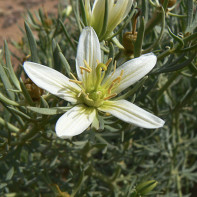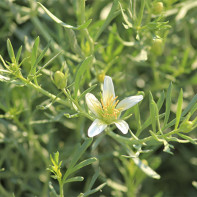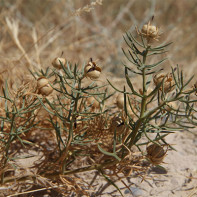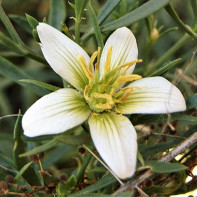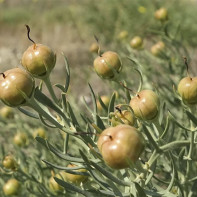Garmala: medicinal properties and contraindications
Medicinal plant, which botanists called Garmala ordinary, has a few more folk names, sometimes very irreverent. It is called the wild or mountain ruta, pigan, dog shit, arrow, bibika. But the most "distinguished" names are grave grass or gravedigger. Despite the fact that hormala is poisonous, it has so many useful properties that when used competently, it fully reveals its therapeutic qualities.
- Chemical composition
- How it looks and where it grows
- Gathering and storage
- Medicinal properties of garmala
- Garmala common in folk medicine
- For colds and rheumatism
- For digestive system diseases
- Calming decoction
- Tea with kidney disease
- Ingredients for baths
- For dyspnea and asthma
- Harmalas aphrodisiac
- For sciatic nerve inflammation
- For joint pain
- Smoke fumigation
- For snake bites
- Types of medicinal compositions
- Infusion
- Tincture
- Decoction
- Oil
- Contraindications to use
Chemical Composition
Garmala is poisonous because it contains a large number of alkaloids, primarily garmalin, garmin and peganin. These are the main active substances of the plant.
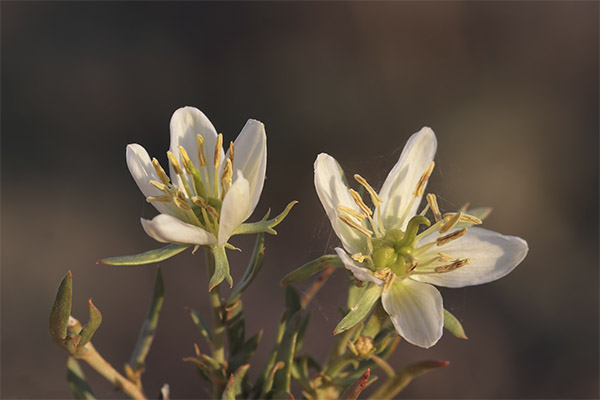
Much of the harmin (second name banisterin) is found in the roots, and young plants are much richer in this substance than older ones. Garmalin predominates in the seeds, and peganin - in the herbaceous, green part of the plant. And the greatest concentration of alkaloids is concentrated in the seeds, here their content can reach 9%.
Because of the complex of alkaloids, garmala relaxes the smooth and striated muscles, i.e. has a muscle relaxant action.
In small doses, harmaline is able to excite the nervous system and activate the motor centers in the brain. Its list of actions includes stimulation of uterine muscles, dilation of peripheral blood vessels, which helps to reduce blood pressure and normalize the heart rhythm. But in large quantities this alkaloid is extremely toxic and deadly.
Peganine and harmin have a relaxing effect on the musculature of a number of organs - such as the uterus, heart and intestines. Garmin is less toxic than peganin, but it can also provoke seizures. Peganine can affect the bronchial wall by relaxing it, which makes it possible to use it in bronchial asthma.
Garmala also contains the alkaloid peganidine (it is contained in the green parts of the plant), which is characterized by bactericidal and antistaphylococcal effects.
Chemists have isolated a number of other alkaloids from the plant, all of which are to a different extent relatives of hormin and peganidin and are found in insignificant amounts.
The seeds also contain a fatty oil, which healers specially extract and collect. In addition, garmala is rich in protein and a number of other beneficial substances. These are carotenoids endowed with antioxidant properties, steroids involved in building muscle mass, cholesterol regulating and immune system strengthening saponins.
The green part of the plant has a significant amount of micro- and macroelements: potassium, magnesium, iron, aluminum, copper, zinc, strontium, manganese, chromium, nickel, lead. Getting into the human body, these components take part in almost all processes of life.
What does it look like and where does it grow?
Garmalus is a very vital plant, which is proved by its strong, multi-headed root, which goes deep into the ground in search of moisture at least 3 meters deep. Such a powerful root feeds the above-ground part, which grows to a height of 30 to 80 cm.
The plant has a neat, spherical shape due to its branching stems, which can form more than 100 of them from a single root. The stems themselves are mostly bare and haphazardly tangled, while the leaves covering them are cut into 3-5 narrow and pointed lobes. They sit on the green stem in turn, attaching on very short petioles.
The plant blooms from May until July with yellow or white flowers, which can grow either singly at the end of a branch or three at a time. The five-petaled flower calyx would resemble a bell-shaped flower if it were not cut to the base of the petals. Each petal is up to 2 cm long.
When the flower fades, the charmala produces a rather large and visible fruit, 6 to 10 mm in diameter. Because of this, the fruit is not to be confused with any other plant. It is a flattened ball-shaped capsule, consisting of three lobes-nests, between which there are septa. Each socket contains a triangular brown or gray-brown seed, about 3 to 4 mm in size. Seeds ripen from the end of July and each bush can yield up to 120,000 seeds.
Garmala has a distinctive strong recognizable odor, which is why it is called "gravedigger". It is similar to the smell of wormwood, but not as stifling.
Native to Asia, it is a weed that tolerates drought well, so it does well in moisture-poor soils of Jordan, Pakistan and India. Its habitat is wastelands near populated areas, abandoned cemeteries and old abandoned pastures, where it can form extensive weeds. Oases in deserts, steppes, stony foothills - it adapts everywhere.
In Russia it can be found in the southern regions of the European part of the country and also on the steppe territories of Western Siberia. In neighboring countries, it is common in some regions of Ukraine and in all areas of Central Asia.
Collection and storage
All parts of the plant, including its root, stems, leaves, flowers and seeds, are used for medicinal purposes. And Eastern healers believe that it is better to collect it in the desert than in the foothills, because it accumulates more medicinal substances there.
The roots are best harvested from May until mid-July. Younger specimens are preferred because they have more alkaloids. They are dug out, well washed and dried in the sun. It is more convenient to store them in chopped form. The next time the roots are dug in this area only after three years. Otherwise, the population will not recover.
Seeds are harvested when they begin to mature and the capsules are about ready to open, that is, from the end of July and in August. The grass is gathered in sheaves, dried and then threshed to separate the seeds. After drying in a draught they are stored in cotton bags or paper bags.
And the above ground part - greenery - is collected twice, at different times. They are harvested first in April, when there is the greatest amount of peganine alkaloid in the herbs. As the plant develops, the amount of peganin decreases, but the concentration of garmal increases. And herbalists go to harvest the raw material for the second time, already in May. April and May harvests are dried and stored separately in order to make the most of their useful properties. But it is necessary to collect the herb when it is in bloom, before the fruits form.
Use a sharp sickle to harvest herbs. The green part of the plant is cut to 15 cm from the soil surface, dried by spreading on clean paper with a layer of no more than 8-10 cm in a good weathered under a shed or in the attic. Dried grass is cut into 6-8 cm pieces and stored in a dry room, packed in paper bags. Herbs do not lose their useful properties for 2 years.
Grass can be cut in the same area with an interval of 2 years, during this time the gardenala has time to restore its thickets.
When harvesting the plant, you need to do everything quickly, clearly and carefully to reduce the time of contact with it in order to avoid headaches and nausea.
The medicinal properties of garmala

- The chemical composition of garmala determines its use as a remedy that can excite the nervous system and simultaneously calm down, fight infection and relieve pain, remove inflammation and stimulate perspiration, increase the volume of excreted body fluid and kill helminthes. However, in Russia official medicine does not use Garmala preparations, it is still being studied by biologists and physicians, so there is no such medicine in Russian pharmacopoeia.
- On the territory of African and Asian states and in some European countries this plant is used in state clinics. In the neighboring countries of Central Asia, Russia, compressed garmala is even sold in pharmacies, it is similar to pencils. And in Yemen, its preparations are recommended for depression sufferers. Infusions of the leaves treat neurasthenia, get rid of kidney disease and periodontal disease.
- In Afghanistan, paralytic patients are fumigated with the smoke of this plant and applied compresses made from the plant's herbs to tumor sites. In India, fumigation is also a common procedure. But the seeds are burned there, and their smoke is used to treat open, hard-to-heal wounds. Another country where fumigation is used is Uzbekistan. During a flu epidemic, the smoke of hormalas is used to treat rooms, thus disinfecting them. Most often, the dried top part of the bush with seed capsules is taken for fumigation. Dried leaves are also used, but much less frequently. When lit, the dry raw material smells like good tobacco, but does not eat the eyes, unlike the smoke of other medicinal plants.
- Compounds with Garmala are also prescribed for inflammatory diseases of the peripheral nervous system - neuritis, both mononeuritis, affecting single nerves, and polyneuritis, having a more extensive distribution. The medicinal plant stimulates the muscular system and adjusts nerve conduction.
- Foreign doctors also use the ability of the components of this medicinal plant - alkaloids of hormone and peganine - to treat pathologies of the central nervous system, such as Parkinson's disease or tremor paralysis.
- A number of Eastern clinics use the ability of the alkaloids in Garmala to fight severe addiction to cocaine and heroin.
- The use of the medicinal plant is based on its medicinal properties. So, in addition to being a good antidepressant, hormal is also able to reduce blood pressure and fight the Koch's bacillus, the causative agent of tuberculosis. Peganidine not only fights against staphylococcal infection, but also pushes the heart muscle and activates the formation of bile. The alkaloid vasicin is a mild laxative and also relieves bronchial spasm, making it possible to use it to treat asthma.
- Garmala has endowed decoctions, infusions, tinctures and other compositions with the ability to relieve pain, to soothe.
- Digestive issues, worms exorcism, measles, chicken pox and malaria are also treated by garmala in several parts of the world. In India, it is used to induce uterine contractions for abortions.
- Its antiseptic properties are used to treat fevers, colds, throatwashes for sore throats, and mouthwashes for gum diseases.
- The fresh juice of the plant is put into the eyes to cure cataracts in their initial stages. Caucasian healers believe that this way the cataract is resolved. And to improve vision, the medicinal raw material is mixed with other ingredients, such as honey or wine.
- Baths with decoction of garmala are widely used. They can relieve pain and reduce inflammation in rheumatism. Baths are also recommended for the treatment of scabies, dermatitis and other skin diseases.
- Folk healers in Russia use the herb to relieve patients from chronic constipation, to establish bowel function and remove its atony. In gynecology, Garmala is used to treat mastitis and menstrual disorders.
Garmala common in folk medicine
Healers can often recommend different medicinal forms prepared from the healing plant for the treatment of one ailment. But still there are a number of traditional appointments. So, to soothe pain and remove swelling in painful joints, they apply steamed leaves of harmalas. Decoctions are used as gargles for sore throats, stomatitis or inflamed gums, and if a tooth hurts.
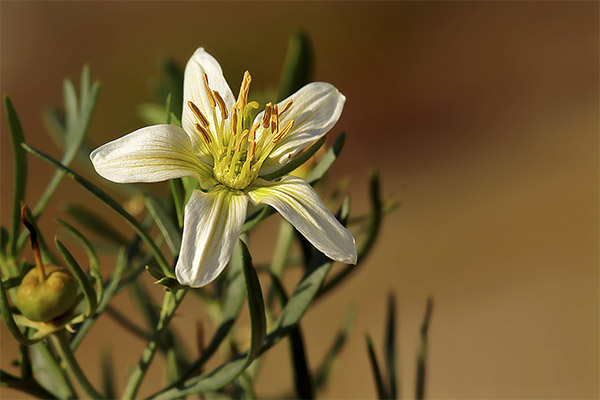
Depressions are relieved with tea, facial nerve tics are heated with a hot decoction or smeared with fresh juice. The same juice is used for eye drops for cataracts, and the seeds are prescribed as anthelmintic. Powdered seeds with honey are recommended for those who often suffer from headaches and hair loss.
Even cosmetic problems are solved with the help of garmala. So, the seeds, pre-soaked in warm water, get rid of gray hair at its first manifestations, for which they are mixed with shampoo and then this mixture washed the head. In addition, the seeds can form a foam, so they are washed to prevent the formation of acne and pimples. And to treat acne that has already appeared, prepare a tincture of the seeds in vodka and then wipe your face with it in the evenings.
For colds and rheumatism.
Infusion prepared according to this recipe can be used to treat various diseases. Depending on the purpose, a different dosage is used. The infusion is prepared on the basis of a glass of boiling water and a tablespoon of dried harmalas. Infuse for an hour, then strain.
To relieve symptoms of colds, prescribe a tablespoon of the remedy 20 minutes before breakfast, lunch and dinner.
Rheumatism, myopathy, and myasthenia are treated by taking three times daily infusion - 20-50 ml at a time, and treatment begins with a small dose, gradually increasing to maximum.
In syphilis treatment also begins with a small dose - 2 tablespoons, gradually increasing to 5 spoonfuls of 2 to 3 times a day.
For diseases of the digestive system
As a choleretic remedy, for the recovery of the digestive system and getting rid of worms, the reception of seeds is shown. The norm - 10 fruits per day - split into 2 doses. Drink boiled water. Already after 3-4 days the effect will be noticeable.
Soothing decoction
This decoction is called sedative, but in fact it calms not only the nervous system, but also rheumatic pains, shortness of breath, relieves asthmatic syndrome, and also shows a diaphoretic, choleretic and diuretic effect.
You need to mix in the same bowl the seeds of hormala and flax in a ratio of 1:3. Take a teaspoon of the resulting mixture, pour 250 ml of boiling water and keep on a steam bath for half an hour under a lid. Strain after cooling and drink a tablespoon 3 times a day - half an hour before meals.
If you breathe the vapor of this decoction, while it is in a water bath, you can cure neuropathy (neuralgia of the facial nerve).
Tea with kidney disease
Drink this tea is recommended for nephritis, pyelonephritis, inflammation of the bladder and kidney stone disease.
Pour 2 teaspoons of the healing plant in an enamel or porcelain bowl. Brew as normal tea, adding 2 cups of boiling water to the dry raw material. Cover with a lid, top still for warmth with a towel and wait 2-3 hours while the drink insists. Then strain and drink 2 tablespoons in the morning, at lunch and in the evening. Bind the reception of medicine to food intake is optional. The duration of treatment - half a year.
Ingredients for the bath
Bathing with Garmala is recommended to relieve rheumatic pains, as well as for the elimination of skin manifestations of metabolic disorders and the treatment of scabies.
Bring 5 liters of water to a boil and pour the liquid 100 grams of dry herbs. Boil the composition for 15-20 minutes over low heat under a closed lid, then insist 2 hours.
Decoction strain and pour into a prepared bath with water of comfortable temperature for the patient. Duration of bathing - 15-20 minutes. The entire course is designed for 10 procedures, a better effect can be achieved if you repeat it every other day.
For shortness of breath and asthma.
Take the seeds of hormal and flax seeds in equal parts, mix and pour a teaspoon of mixture into a small thermos. Pour in the same glass of boiling water and insist in a thermos for 4 to 5 hours.
Drink a tablespoon 4 times a day, without tying to the intake of food. The course of treatment - from 1 to 3 months. Then you need a break for 3 months, after which to resume the reception.
Aphrodisiac of garmala
Roast the seeds of charmala, cool and grind in a coffee grinder. Mix the powder with honey in a ratio of 1:3. You should eat a tablespoon of this mixture every day. Increases sex drive and the ability to conceive.
For inflammation of the sciatic nerve.
To get rid of the suffering caused by long-standing inflammation of the sciatic nerve, you need to grind in a coffee grinder garmala seeds and take them daily for 2 weeks. The daily rate is 3 grams of powder. You can just drink it with boiled water or eat honey or jam.
In case of joint pain
Make a mixture of equal parts of the juices of Garmala and fennel, chicken bile, honey and red wine. This ointment is used to treat joints during aggravations of diseases, as well as to smear on the sciatic nerve area to relieve the pain. Folk healers in the Caucasus also cure impaired vision by putting a drop in each eye every day.
Smoke fumigation
Colds can be treated with the smoke of a medicinal plant. In addition, healers believe that the smoke is a good sleeping aid and antiparasitic.
Heat a teaspoon of dried garmala and fry it in a dry pan. As soon as the smoke begins to appear, lean into it and inhale for a couple of minutes. But do not do this more than 2 times a week.
In case of a snake bite.
Take in a ratio of 1:4 garmala seeds and red wine. Boil the seeds in the wine until they become soft. Strain the seeds and add to this broth with the same volume of leek juice. Drink a glass of decoction twice a day, the interval between treatments is 2 hours. Put lotions soaked in this decoction on the wound from the bite.
Types of medicinal compositions
Getting to the preparation of medicinal compositions from garmala, it is necessary to remember that this plant doctors refer to psychedelics, or psychoactive. They cardinally distort the person's visual perception of the world and influence his emotional state, destroy a number of psychological processes and can lead to hallucinations or changes in the consciousness. Therefore in no case can exceed the recommended dosage and scheme of reception of compositions.
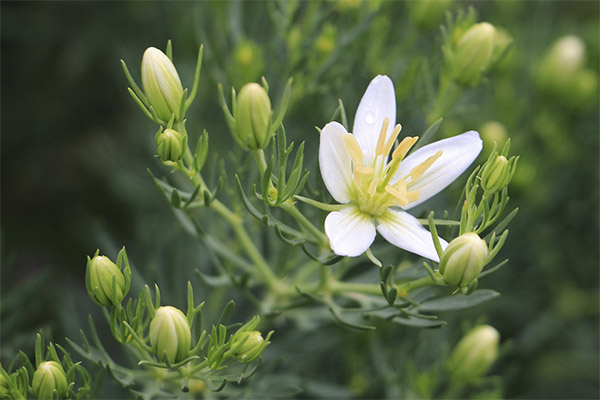
Infusion
In colds, myasthenia gravis, rheumatism and gynecological diseases, an infusion of the healing plant is indicated. To get it, you need to pour boiling water (1-1.5 cups) 1-2 tablespoons of dried harmalas. The composition should infuse for 50-60 minutes, then strain it, divide this daily rate into 3 portions and take 20 minutes before breakfast, lunch and dinner.
Tincture
With vodka
To prepare alcoholic tincture take 100 grams of dried crushed graham and pour it into a glass bottle. Add half a liter of good vodka and leave in a dark place to insist for 3 weeks at room temperature. From time to time the bottle should be shaken.
Strain the finished tincture and take in the morning and evening after a meal. Single dose - teaspoon, no more! Healers recommend this remedy to patients diagnosed with hypertension, neurasthenia, stroke, encephalitis, as well as those suffering from epileptic seizures and schizophrenia. The range of ailments in which the tincture is indicated also includes venous congestion, bronchial asthma, diseases of the spleen, myasthenia and inflammation of the sciatic nerve.
On the wine
100 grams of crushed seeds poured into a two-liter bottle filled with red dry wine. Shake and put in a dark place for a month. Do not forget to shake it daily.
After 30 days, strain and take very little: one must not get carried away and forget that now this is not wine, but a serious, formidable medicine, and an overdose of it is inadmissible. The norm of reception - 25 drops before a meal - from 2 to 3 times a day. Application - for the same problems as vodka tincture.
Decoction
Decoction prepared from harmala has a powerful antimicrobial action, it shows good results when rinsing a sore throat or mouth cavity for stomatitis, gingivitis or periodontal disease.
Pour boiling water (1 cup) with a teaspoon of dried herb Garmala, cover tightly and keep for half an hour in a water bath. After cooling to lukewarm, strain and use for necessary procedures.
Oil
The oil of the plant is extracted in a very curious way. In the first days of spring, a small bush should be covered with an old leaky cauldron, a leaky metal bucket or a damaged deep basin that is not needed in the household. In a month the whole tub will be covered with oily sticky residue from the inside. It remains to scrape it off, put it in a jar and cover it. Folk healers believe that the plant, which survived such a difficult atmosphere and retained the will to live, is able to pass on this power to people.
Even the medieval Persian physician Ibn Sina treated painful joints and inflammation of the sciatic nerve in his patients with this composition, smearing the oil on the sore spots. And in case of problems with menstruation, urinary retention and various colitis, he not only used the oil in the form of an ointment, but also made healing drinks based on it.
Contraindications to use
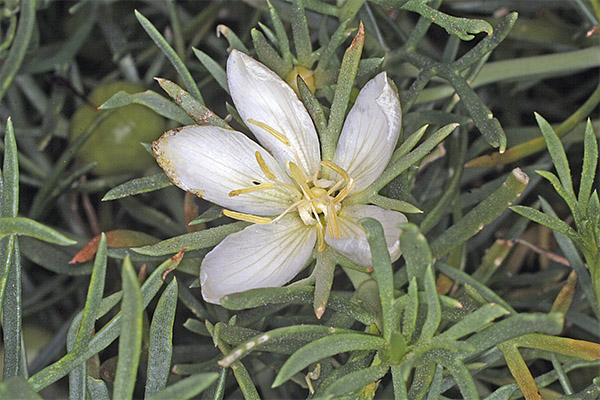
- It is forbidden to people who have various kinds of tics, tremors and other hyperkinesias.
- Do not use compositions based on this plant for pregnant women and mothers nursing babies.
- Individual intolerance and hypersensitivity to the components of the herb is also a contraindication to its use.
The rest of the people are not forbidden to receive compositions from harmalas. But do not forget that this plant is poisonous, so use drugs prepared from it, you can only with the utmost respect for the recommended dosage. If it is exceeded, it may cause drowsiness and low temperature, as well as more serious problems - depression, tachycardia, salivation, convulsions, hallucinations, trembling, paralysis - up to the respiratory arrest. If these symptoms are minimal, an ambulance should always be called, and the victim should be flushed out before it arrives.
If you use remedies based on the medicinal plant for a long time without justification, it is likely to cause respiratory problems, increased urination and disruption of the digestive tract.
It is inadmissible to be treated with Garmala and to drink alcoholic beverages at the same time. And if a person constantly takes some other medication, it is necessary to discuss with the attending physician how they are compatible with harmalaya.
«Important: All information on this site is provided for informational purposes only. information on this website is for information purposes only. Consult with a specialist before applying any recommendations. Consult a health care professional before using any of the recommendations. Neither the editors nor the authors shall be liable for any possible harm caused by materials."

